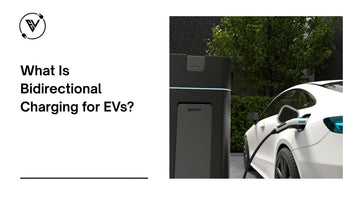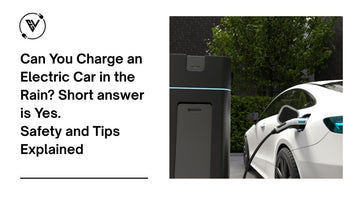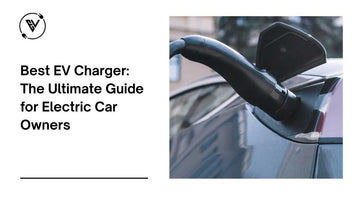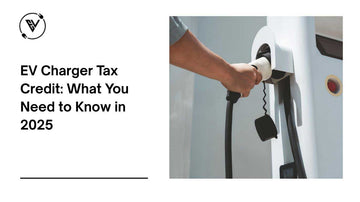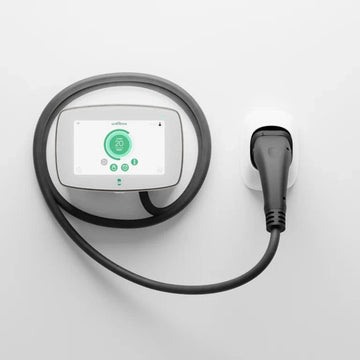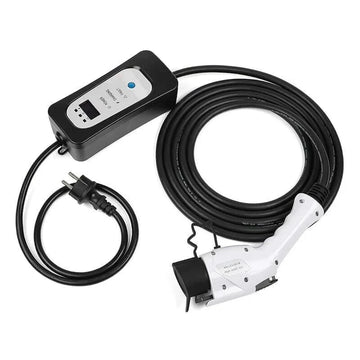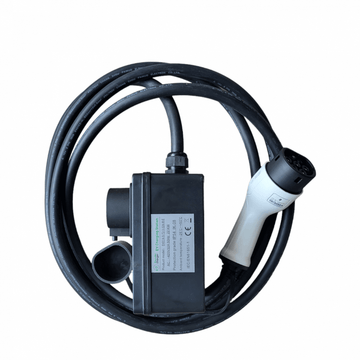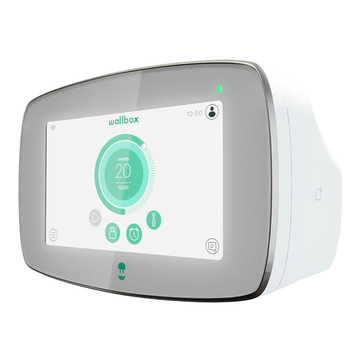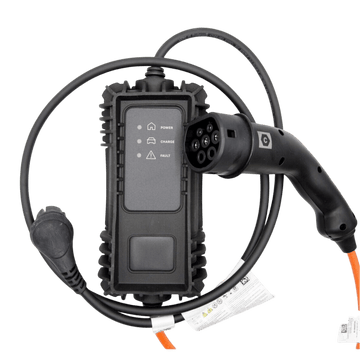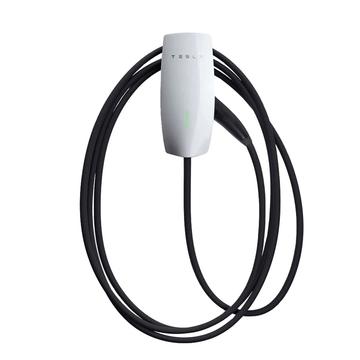Bidirectional charging is a technology that enables electric vehicles to both receive and supply electricity through their charging connection, transforming EVs from simple energy consumers into active grid participants capable of storing, managing, and redistributing power to homes, buildings, or the electrical grid.
The technical foundations including hardware configurations and software protocols, grid participation capabilities, energy management systems based on pricing signals and user preferences, and the transformative impact on modern energy infrastructure is explored in this post, below.
What Does Bidirectional Charging Allows?
Bidirectional charging enables reversible energy flow between electric vehicles and external power sources, transforming EVs into mobile energy storage units.
This technology fundamentally differs from conventional electric vehicle charging systems. Conventional EV charging systems facilitate only unidirectional energy transfer.
Advanced power electronics serve as the core mechanism of bidirectional charging, converting AC grid electricity to DC battery storage and reversing DC battery storage to AC electricity.
Bidirectional charging system creates a two-way energy pathway where electric vehicles can receive and distribute electrical energy.
During the conversion process, the power electronics manage AC-to-DC transformation when drawing power from the grid, while simultaneously enabling DC-to-AC conversion when the vehicle supplies energy back to external devices or the electrical grid.
Reversible energy flow capability positions EVs as dynamic energy management tools and makes vehicle batteries function as distributed energy storage resources.
Distributed energy storage resources can support grid stability, home power during outages, and power supply to devices.
Bidirectional charging optimizes user experience and broader energy management.

How Is Bidirectional Charging Different from Smart Charging?
Smart charging reduces grid strain through load management. Bidirectional charging provides active grid stabilization and energy market participation capabilities.
Smart charging operates as a passive grid management tool, adjusts EV charging schedules based on electricity demand patterns and grid capacity.
Load management shifts charging to off-peak hours, reducing stress on electrical infrastructure during high-demand periods.
Bidirectional charging functions as an active grid participant through vehicle-to-grid (V2G) technology, enabling EVs to consume and supply electricity.
Two-way energy flow allows EVs to act as mobile energy storage units. Mobile energy storage units can discharge power back to the grid during peak demand.
Grid stabilization capabilities include frequency regulation, voltage support, and emergency backup power.
Energy market participation (bidirectional charging) enables EV owners to sell stored energy and purchase cheaper electricity. EV owners can generate revenue streams.
Market integration transforms EVs into distributed energy resources. Distributed energy resources support grid reliability and renewable energy integration.
The Main Types of Bidirectional Charging (V2G, V2H, V2L, V2V)
Bidirectional charging technology encompasses four distinct operational modes (V2G, V2H, V2L, V2V) that enable electric vehicles to function as mobile energy storage systems.
Vehicle-to-Grid (V2G) facilitates energy transfer back to utility infrastructure for grid stabilization.
Vehicle-to-Home (V2H) powers residential electrical systems during outages or peak demand periods.
Vehicle-to-Load (V2L) provides portable power for external devices through standard outlets.
Vehicle-to-Vehicle (V2V) enables direct energy transfer between compatible electric vehicles. V2V energy transfer supports emergency charging applications.

Vehicle-to-Grid (V2G)
Vehicle-to-grid (V2G) technology enables bidirectional power flow between electric vehicle batteries and electrical infrastructure, transforming EVs from energy consumers into dynamic grid resources that provide grid stabilization during peak demand and generate revenue for owners.
V2G technology enables bidirectional power flow between EV batteries and electrical infrastructure, transforming EVs from energy consumers into dynamic grid resources.
V2G technology provides grid stabilization during peak demand, generating revenue for electric vehicle owners.
Key V2G benefits include:
Grid stabilization occurs during periods of high electricity demand.
Revenue generation occurs through energy sales back to the grid.
Primary V2G challenges encompass:
V2G deployment is limited by insufficient bidirectional charging infrastructure.
V2G adoption faces battery degradation concerns. Increased charge-discharge cycling may reduce EV battery lifespan.
V2G implementation is hindered by regulatory barriers. Regulatory barriers require significant adaptations to utility business models and grid systems.
V2G technology creates a two-way energy exchange system.
EV batteries serve as distributed energy storage resources, and can supply power back to the grid during peak consumption.
Bidirectional capability positions EVs as mobile energy assets. Mobile energy assets (EVs) create new economic models, so EV owners can monetize battery capacity during parked, connected periods.
Vehicle-to-Home (V2H)
Vehicle-to-home (V2H) technology provides emergency backup power and peak-hour energy cost reduction, enhances energy security and renewable integration capabilities.
V2H technology enhances energy security and renewable integration capabilities.
V2H technology transforms EVs into residential backup power sources, while stored battery energy (in EVs) is converted into household electricity.
Bidirectional charging infrastructure reverses conventional energy flow patterns. Power (in V2H) flows from vehicle to home.
V2H system operates through specialized bidirectional chargers connected to residential electrical panels. V2H systems operate independently by isolating homes from external electrical networks. Isolation capability makes V2H valuable during power outages or grid failures.
Key V2H applications center on emergency backup power and peak-hour cost reduction. Homeowners avoid high electricity costs by using EV battery power during peak-rate periods. EV batteries can be recharged during off-peak hours when rates are lower.
Energy security is enhanced by reduced dependence on grid electricity. Renewable integration capabilities allow homeowners to store solar or wind energy in vehicle batteries. Stored renewable energy can be used for later household use.
Vehicle-to-Load (V2L)
V2L applications include emergency power, construction tool operation, and off-grid camping. V2L technology transforms EVs into mobile power sources. V2L systems provide emergency power for medical equipment and communication during outages.
Construction sites benefit from V2L capability to power tools without generators. V2L technology eliminates need for separate generators on construction sites.
Recreational users leverage V2L for off-grid camping. V2L technology enables full appliance functionality in remote locations.
V2L systems require compatible vehicle electronics and specialized voltage conversion systems. Voltage conversion systems enable controlled external power delivery.
V2L systems manage power flow from vehicle batteries to external devices, maintain safety protocols and prevent damage to vehicle electrical systems and connected equipment.
Vehicle-to-Vehicle (V2V)
Vehicle-to-Vehicle (V2V) charging enables direct power transfer between electric vehicles through bidirectional charging capabilities and compatible communication protocols.
This peer-to-peer energy exchange technology creates mobile networks of shared EV power resources where vehicles can distribute electricity to one another during critical situations.
Both participating vehicles must be equipped with integrated bidirectional charging systems that support two-way power flow, allowing one EV to act as a power source while the other receives charging.
The compatible communication protocols ensure safe and coordinated power transfer by managing voltage levels, current flow, and charging parameters between the connected vehicles.
V2V charging proves particularly valuable during emergency power sharing scenarios and roadside assistance situations, where a charged vehicle can provide power to a stranded EV with a depleted battery.
Unlike V2L technology that focuses on powering external devices and equipment, V2V charging specifically targets vehicle-to-vehicle energy distribution, expanding the practical applications of bidirectional charging beyond stationary power needs to create dynamic, mobile charging networks among electric vehicle users.

Benefits of Bidirectional Charging for EV Owners and Businesses
Bidirectional charging systems provide economic optimization, grid stability enhancement, and emergency resilience capabilities.
Economic optimization occurs through energy arbitrage opportunities. Users can store electricity during low-cost periods and can sell electricity back during peak pricing hours.
Participation in utility demand-response programs generates additional revenue streams as EV batteries serve as distributed energy resources that utilities can access during high-demand periods.
Grid stability enhancement results from bidirectional charging systems acting as decentralized power sources that support electrical grid operations. During peak demand periods, these systems discharge stored energy back to the grid, reducing strain on traditional power generation infrastructure and improving overall grid reliability.
Emergency resilience provides substantial backup power capacity. EVs can deliver 2–4 days of electrical supply during outages. This capability transforms EVs into mobile power stations. Mobile power stations maintain critical home or business operations during outages.
Quantifiable advantages extend beyond basic energy storage. Strategic value is created for individual EV owners through reduced energy costs and backup power. Commercial enterprises gain opportunities for energy management optimization and grid services participation.
Technical Requirements and Compatibility
Bidirectional charging requires EVs with V2X hardware, bidirectional EVSE, and proper electrical infrastructure.
Compatible EV models include, but not limited to Tesla Cybertruck (Powershare), Ford F-150 Lightning (Home Integration), Nissan Leaf (V2H).
Tesla Cybertruck's Powershare system enables vehicle-to-home and vehicle-to-grid functionality. Powershare system uses built-in inverter technology.
Ford F-150 Lightning’s Home Integration System provides up to 9.6 kW of continuous power output.
Depending on energy use, can power an average household for about three days, or up to ten days with very limited consumption, during an outage.
Nissan Leaf’s V2H capability was among first mainstream implementations of bidirectional charging. Nissan Leaf’s V2H capability offers CHAdeMO-based bidirectional charging for home backup.
Bidirectional EVSE units serve as the critical interface between EVs and electrical systems. EVSE units contain AC/DC converters that manage power flow reversal.
Converters allow electricity to flow to and from the vehicle and ensure voltage regulation and safety protocols during charge/discharge.
Bidirectional technology transforms vehicle batteries into mobile energy storage systems. Mobile energy storage systems enable home backup, grid stabilization, peak load management.
Electrical infrastructure must support proper grounding, safety disconnects, utility interconnection standards. Safe bidirectional power transfer depends on proper electrical infrastructure.

What Are The Challenges and Limitations of Bidirectional Charging?
Bidirectional charging faces three major barriers: cost, regulation, and accessibility.
V2G chargers require substantially higher upfront investment than standard chargers.
Cost implications represent the most significant barrier. Financial viability of V2G systems depends on achieving minimum utilization rates.
Regulatory hurdles create complexity through inconsistent policy frameworks. Current regulations lack specific provisions for V2G energy trading mechanisms. Regulatory uncertainty affects consumers and energy providers.
Limited accessibility constrains widespread adoption of bidirectional charging. Accessibility limitations arise from geographic disparities and restricted vehicle compatibility.
Consumer participation is reduced by lack of infrastructure or compatible EVs in some geographic areas.
Interconnected challenges collectively impede scaling of bidirectional charging technology. Bidirectional charging technology offers promising capabilities for grid integration and energy management.
The Future of Bidirectional Charging and Smart Energy Networks
Bidirectional charging adoption is accelerating with market projections showing growth.
Bidirectional EV charger market will reach $9.1 billion by 2034. V2G systems will expand from $14 million in 2024 to $117 million by 2032 at 30% CAGR.
Deployment barriers are diminishing due to market forces, regulation, and standardization. Bidirectional EV charger market demonstrates substantial growth momentum. V2G systems show dramatic expansion with their projected eight-fold increase over the next decade.
Future interoperability frameworks will enable seamless communication between charging systems and grid infrastructure.
Automaker commitments are driving development of compatible vehicle technologies.
Advances in vehicle tech will establish smart energy networks. Smart energy networks transform EVs into distributed energy resources.
Infrastructure will enhance energy resilience through distributed storage. Distributed storage systems leverage thousands of connected EVs as mobile batteries.
Network approach optimizes renewable integration by storing excess solar and wind energy.
Grid stability improves through real-time energy balancing, where EVs can discharge power during high demand or grid emergencies. Real-time balancing creates a more flexible and reliable energy ecosystem.
Bidirectional Charging: FAQ’s
Does Bidirectional Charging Affect EV Battery Warranty Coverage?
Bidirectional charging typically does not void EV battery warranties when used within manufacturer specifications. Major automakers like Tesla, Ford, GM, and Nissan generally cover Vehicle-to-Grid (V2G), Vehicle-to-Home (V2H), and Vehicle-to-Load (V2L) operations under standard warranty terms. Battery degradation rates may actually decrease through controlled bidirectional discharge cycles, as these systems operate within optimal voltage ranges and temperature parameters specified by battery management systems.
Can I Use Bidirectional Charging During Power Outages?
Yes, you can use bidirectional charging during power outages through Vehicle-to-Home (V2H) systems. Electric vehicles equipped with bidirectional charging capability can provide emergency backup power to homes for 1-3 days during electrical outages.
This technology requires specialized Electric Vehicle Supply Equipment (EVSE), automatic transfer switches, and proper electrical panel interconnection to ensure safe operation. The system allows your EV's battery to function as a temporary power source, delivering electricity back to your home's electrical grid when the main power supply is interrupted.
How Much Money Can I Save With Bidirectional Charging?
You can save approximately 20% on total vehicle ownership costs with bidirectional charging systems. These savings come from energy credits through utility programs, electricity bill reductions up to 30%, and revenue from selling stored energy back to the grid. Bidirectional charging technology enables electric vehicles to function as mobile energy storage units, creating multiple income streams that significantly offset charging costs and vehicle expenses.
Will Bidirectional Charging Reduce My Ev's Battery Lifespan?
No, bidirectional charging will not significantly reduce your EV's battery lifespan when properly managed.
Bidirectional charging does increase battery degradation through additional charging cycles, adding approximately 1.8% annual capacity loss beyond standard rates. However, advanced battery management systems mitigate 70-80% of degradation risks through optimized discharge patterns.
What Happens if My EV Disconnects While Powering My Home?
If your EV disconnects while powering your home, the system automatically shuts down and switches to grid power or backup systems.
Safety protocols immediately isolate the electrical grid and halt household power distribution during EV disconnect scenarios. The vehicle-to-home (V2H) system includes automatic transfer switches and isolation relays that detect disconnection within milliseconds.
Manual reset procedures at both the bidirectional charger unit and main electrical panel enable power restoration after EV reconnection and proper system synchronisation verification. Critical safety components include ground fault circuit interrupters, arc fault detection systems, and utility grid anti-islanding protection to prevent power backfeed during disconnection events.


